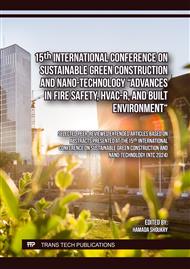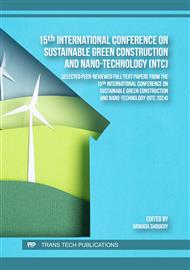p.3
p.15
p.33
p.51
p.61
p.73
p.89
p.97
An Innovative Design for Environmentally Friendly Housing Model in Egypt
Abstract:
Traditional solutions for residential buildings often focus on maximizing economic benefit at the expense of environmental and social considerations. As a result, many residential buildings are poorly ventilated, poorly insulated, and lack access to natural light and views. These factors can lead to health problems, discomfort, and energy inefficiency. This research presents an innovative model for environmentally friend housing design that maximize economic value while also considering environmental and social factors. The model is based on an applied case study of a residential development in Cairo, Egypt. The model's key features include orientation of buildings to maximize natural ventilation and daylighting - use of sustainable building materials and construction methods - provision of green spaces and other amenities for residents. The model was able to achieve significant environmental and social benefits, including reduced energy consumption - improved indoor air quality - increased comfort and well-being for residents - enhanced visual and acoustic insulation - the model is also economically viable, providing developers with a competitive advantage in the market. Overall, this research presents a promising new approach to the design of environmentally friendly housing.
Info:
Periodical:
Pages:
89-96
Citation:
Online since:
June 2024
Authors:
Price:
Сopyright:
© 2024 Trans Tech Publications Ltd. All Rights Reserved
Share:
Citation:



